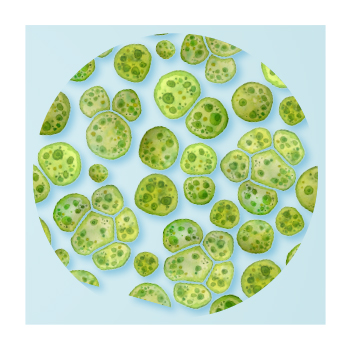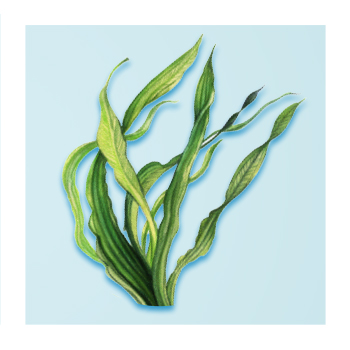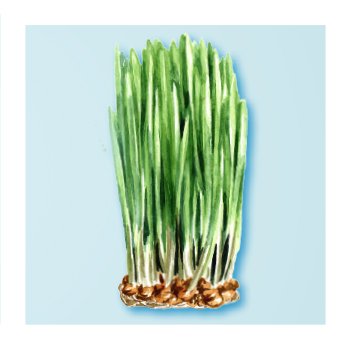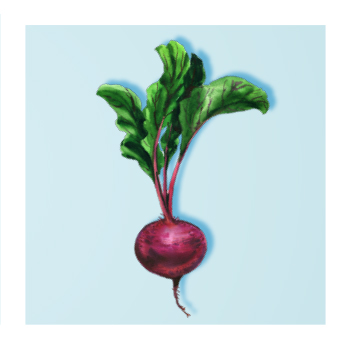


Sign-up for {N}power to get exclusive discounts, newsletters, members-only features, and more!

Want to have more energy, improve cognitive function, protect yourself from just about every chronic disease, and feel happier? Look no further than fabulous greens and beets!
You’ve heard it a million times from a hundred different sources: Eat more vegetables! It is one of the few things that everyone in the wide (and often contentious) world of nutrition can agree on, and for good reason. High vegetable intake is associated with a decreased risk of stroke, reduced cancer risk, reduced cardiovascular mortality, increased bone mineral density, decreased risk of type-2 diabetes, decreased risk of depression, and slower cognitive decline in seniors, which all translates to better health.1 2 3 4 5 6 7 Beyond improved physical health, research also suggests that getting more veggies in your diet actually makes you happier.8 9 But how are you doing at getting your three to five servings of vegetables every day? If you’re like most Americans, you’re probably falling short, particularly on greens. Green supplements are an easy way to reap the health benefits, and even if you’re already a big veggie eater, you can still benefit from a green supplement. After all, when was the last time wheat grass, moringa, spirulina, or chlorella made an appearance on your dinner plate?
So what makes greens so great in the first place? Aside from an impressive amount of vitamins, minerals, and phytonutrients that all have benefits of their own, they are also a rich source of chlorophyll. Think back to junior high biology and you might remember that chlorophyll is the substance that allows plants to make energy from the sun. You might also remember that chlorophyll is what makes green plants green. As important as it is for plants, chlorophyll is also important for humans. It has a chemical structure similar to hemoglobin, the protein in red blood cells that carries oxygen throughout the body, which has given chlorophyll a reputation as a blood strengthener and energy booster. It has long been valued for detoxification and appears to deactivate food-borne carcinogens, such as those created during high-heat cooking, and inhibit the activation of numerous other carcinogens in the liver.10 11 It supports satiety and decreases cravings, making it a valuable addition to any weight loss routine.12 It also protects the body from free radical damage and in several in vitro and animal studies, chlorophyll has been shown to reduce inflammation, which underlies nearly every chronic disease.13 14 15 16 17 18 No wonder greens are so good for us!
Whether or not kale, spinach, and broccoli appear regularly in your diet, there are numerous other green foods you might be missing out on. And if you struggle to get in even one serving of green vegetables a day, green supplements are an easy and convenient way to get your chlorophyll fix and reap other benefits as well.
 Chlorella is a fresh-water algae. It has the highest content of chlorophyll of all green plants and is popular with vegans because it contains all of the essential amino acids and the omega-3 fats eicosapentaenoic acid (EPA) and docosahexaenoic acid (DHA). Chlorella really shines when it comes to cardiovascular health. In a meta-analysis looking at 19 chlorella studies, researchers found that supplementation decreased total cholesterol, LDL cholesterol, blood pressure, and fasting glucose. The results were most pronounced in unhealthy subjects, precisely those who need help the most.19 It is also a potent antioxidant and anti-inflammatory and may improve glucose tolerance and insulin sensitivity, all of which support metabolic health and cardiovascular function.20 21 22 It is also a real powerhouse when it comes to detoxification. Numerous studies have found that chlorella supplementation not only decreases the burden of heavy metals and other toxins, but also reduces oxidative stress and other damage that exposure to these toxins can cause.23 24 25 26 27 It appears to be at its best when it is taken concurrently with heavy metal exposure (rather than after), meaning we could all use a daily dose to help protect us from the toxins we encounter regularly in our air, water, and even food.28 29 Chlorella has a tough cell wall, which can make it difficult to digest, so be sure to look for cracked or broken cell wall chlorella when choosing a supplement.
Chlorella is a fresh-water algae. It has the highest content of chlorophyll of all green plants and is popular with vegans because it contains all of the essential amino acids and the omega-3 fats eicosapentaenoic acid (EPA) and docosahexaenoic acid (DHA). Chlorella really shines when it comes to cardiovascular health. In a meta-analysis looking at 19 chlorella studies, researchers found that supplementation decreased total cholesterol, LDL cholesterol, blood pressure, and fasting glucose. The results were most pronounced in unhealthy subjects, precisely those who need help the most.19 It is also a potent antioxidant and anti-inflammatory and may improve glucose tolerance and insulin sensitivity, all of which support metabolic health and cardiovascular function.20 21 22 It is also a real powerhouse when it comes to detoxification. Numerous studies have found that chlorella supplementation not only decreases the burden of heavy metals and other toxins, but also reduces oxidative stress and other damage that exposure to these toxins can cause.23 24 25 26 27 It appears to be at its best when it is taken concurrently with heavy metal exposure (rather than after), meaning we could all use a daily dose to help protect us from the toxins we encounter regularly in our air, water, and even food.28 29 Chlorella has a tough cell wall, which can make it difficult to digest, so be sure to look for cracked or broken cell wall chlorella when choosing a supplement.
 Moringa is relatively new to the Western world’s greens scene, but people around the world have been enjoying its nutrient-dense goodness and relying on it for its medicinal properties for thousands of years. Moringa leaf is incredibly nutrient dense—gram for gram it contains four times more vitamin C than oranges and four times more calcium than milk.30 31 Traditionally, moringa is used for nearly all inflammation-related diseases, including heart disease and high blood pressure, arthritis and joint pain, and type-2 diabetes. Many of its benefits are believed to come from its strong antioxidant activity. As a bonus, moringa is very environmentally friendly, easily grown in drought and desertified areas, and beneficial in building healthy soil.
Moringa is relatively new to the Western world’s greens scene, but people around the world have been enjoying its nutrient-dense goodness and relying on it for its medicinal properties for thousands of years. Moringa leaf is incredibly nutrient dense—gram for gram it contains four times more vitamin C than oranges and four times more calcium than milk.30 31 Traditionally, moringa is used for nearly all inflammation-related diseases, including heart disease and high blood pressure, arthritis and joint pain, and type-2 diabetes. Many of its benefits are believed to come from its strong antioxidant activity. As a bonus, moringa is very environmentally friendly, easily grown in drought and desertified areas, and beneficial in building healthy soil.
 Spirulina is another fresh-water algae that grows in tropical and subtropical lakes. It is about 60 percent protein by weight and contains all the essential amino acids, making it one of the best non-animal proteins around. Spirulina is also high in the omega-6 fat gamma linoleic acid (GLA), which unlike most omega-6 fats, is anti-inflammatory. It is so nutrient dense in fact, that it was a staple of the Aztec diet. Spirulina supports cardiovascular health by lowering blood pressure, balancing cholesterol levels, and reducing the risk of stroke. It too is valued as a detoxification aid and when combined with zinc may be capable of detoxifying arsenic from the body.32 It is often recommended for those needing a little energy boost, because it improves mental and physical fatigue,33 and it has also been found to significantly improve the symptoms of allergic rhinitis (allergies), including nasal discharge, sneezing, and nasal congestion and itching.34
Spirulina is another fresh-water algae that grows in tropical and subtropical lakes. It is about 60 percent protein by weight and contains all the essential amino acids, making it one of the best non-animal proteins around. Spirulina is also high in the omega-6 fat gamma linoleic acid (GLA), which unlike most omega-6 fats, is anti-inflammatory. It is so nutrient dense in fact, that it was a staple of the Aztec diet. Spirulina supports cardiovascular health by lowering blood pressure, balancing cholesterol levels, and reducing the risk of stroke. It too is valued as a detoxification aid and when combined with zinc may be capable of detoxifying arsenic from the body.32 It is often recommended for those needing a little energy boost, because it improves mental and physical fatigue,33 and it has also been found to significantly improve the symptoms of allergic rhinitis (allergies), including nasal discharge, sneezing, and nasal congestion and itching.34
 Wheat grass is the young grass of the common wheat plant and can be juiced or ground into a fine powder. It is a serious antioxidant powerhouse and an excellent source of chlorophyll. Wheat grass supports a variety of health-promoting functions including hormone balance and blood sugar balance. Many regular wheat grass users report improved mental wellbeing, likely due to its high level of nutrients and ability to support detoxification. It also has a reputation for improving digestive function and reducing gastro-intestinal inflammation.35 36 It is even safe for those who follow a gluten-free diet, because wheat grass is harvested while young, before the gluten protein begins to develop.
Wheat grass is the young grass of the common wheat plant and can be juiced or ground into a fine powder. It is a serious antioxidant powerhouse and an excellent source of chlorophyll. Wheat grass supports a variety of health-promoting functions including hormone balance and blood sugar balance. Many regular wheat grass users report improved mental wellbeing, likely due to its high level of nutrients and ability to support detoxification. It also has a reputation for improving digestive function and reducing gastro-intestinal inflammation.35 36 It is even safe for those who follow a gluten-free diet, because wheat grass is harvested while young, before the gluten protein begins to develop.
Whether you eat your three to five servings of veggies each day, or barely make it to one serving, adding a green supplement to your daily routine is a good idea. Not only can these greens help to fill the gap for those not meeting their daily vegetable goal, but they also offer a super nutrient-dense boost for anyone looking to improve their health, have abundant energy, and just plain feel great. The hardest part is choosing the “best” green supplement for you. With so many great options it can make narrowing it down to one or two a difficult choice. A good place to start is with a green that really speaks to your own personal goals. But you might also want to consider taste and try a few to see which ones you like best. There are also many blends of greens available that take some of the work out of deciding. These products contain a variety of super greens, often with other vegetables and fruits added in for even more benefit. There are even greens blends with chocolate, so everyone is sure to find a good match.
Once you’ve got your greens, there are numerous ways to include them in your diet. Of course just mixing a greens powder with water or juice is always an option, but considering that chlorophyll is fat soluble, adding them to something that contains healthy fats, like a smoothie, is a good idea. Don’t stop there though! Green powder supplements can be added to salad dressings and sauces, homemade energy bars, soups, oatmeal, and even baked goods. The sky’s the limit!
You’ve always known greens are good for you, and now you know they boost nearly every aspect of health and wellbeing. While most of us fall short on optimal amounts in our diets, a green supplement makes it easy to get that boost every day. So get your greens on, you’ll be happy you did!
 While decidedly not green, beets deserve some special attention. Beets are one of nature’s highest sources of nitrate, a naturally occurring compound that the body converts into nitric oxide (NO) and it has been discovered that NO does a lot of really important things in the body. In the cardiovascular system, it relaxes blood vessels, which improves blood flow and lowers blood pressure; plays a critical role in new blood vessel formation; and inhibits platelet aggregation (clots).37 38 39 It modulates inflammation, improves insulin sensitivity in obese adults, and has been shown to significantly lower the postprandial insulin response and glucose response in healthy adults.40 41 42
While decidedly not green, beets deserve some special attention. Beets are one of nature’s highest sources of nitrate, a naturally occurring compound that the body converts into nitric oxide (NO) and it has been discovered that NO does a lot of really important things in the body. In the cardiovascular system, it relaxes blood vessels, which improves blood flow and lowers blood pressure; plays a critical role in new blood vessel formation; and inhibits platelet aggregation (clots).37 38 39 It modulates inflammation, improves insulin sensitivity in obese adults, and has been shown to significantly lower the postprandial insulin response and glucose response in healthy adults.40 41 42
When it comes to improving stamina, NO really shines. It helps muscles to work more efficiently and use less oxygen and has been shown to improve cycling, running, kayaking, walking, rowing, and diving performance.43 44 The effects of NO on exercise performance are especially pronounced in amateur athletes, so you don’t have to be a highly trained athlete to feel the benefits. Another benefit we don’t often hear about when talking about NO is its influence on brain function and cognition. As we age, blood flow to our brains tends to be reduced, which impairs cognitive function. Beets, and the NO that the body produces from them, improve blood flow to the brain, particularly to the frontal cortex, the area of the brain responsible for many essential cognitive processes.45
Beets aren’t a staple in your diet? No problem! Juice and powdered beet supplements can help fill that void. And beets aren’t the only source of naturally occurring nitrate either, arugula, Swiss chard, and spinach are all great sources, and so are spirulina and chlorella. Just one more reason to get those greens!



Sign-up for {N}power to get exclusive discounts, newsletters, members-only features, and more!